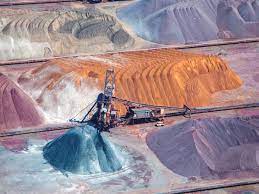
As the world confronts climate change and brewing geopolitical tensions, China has built up its dominance over critical minerals in the past two decades and the potential weaponization of such dependence is spurring the push to «friend-shore» critical mineral supply chains, reported Hinrich Foundation. It is a unique Asia-based philanthropic organization that works to advance mutually beneficial and sustainable global trade.
In a study, Akhil Ramesh and Rob York of Pacific Forum map the supply chains of critical minerals, showing how China assumed a central role in harvesting and distributing them, and offer suggestions on diversifying the industry. Friend-shoring is a strategy where a country sources the raw materials, components and even manufactured goods from countries that share its values. The dependence on the countries considered a «threat» to the stability of the supply chains is slowly reduced. The purpose of friend-shoring is to insulate countries’ supply chains from less like-minded nations, such as China in the case of the US.
Critical minerals go beyond «rare earths», constituting the key ingredients in a wide variety of high-end technologies that have become omnipresent in modern-day societies. The significance of these minerals has expanded in scope as nations work toward their green transition, said Ramesh and York. Over the last 20 years, China has become the leader in mining most and processing all major critical minerals.
China’s demand for critical minerals soared due to its rapid technological advancements and transition to clean energy sources. As a result, the Middle Kingdom exerts significant control over both upstream and downstream markets. In the long run, this dominance could impact innovation and impede global climate response, reported Hinrich Foundation.
From the availability of critical minerals to the industrial capacity for processing in each economy, the authors conclude that Canada, Australia, and Chile present the most viable alternatives to re-shoring supply chains away from China in the Indo-Pacific region. Canada has joined the US in its trade tussle with China. In November 2022, the Canadian government forced Chinese companies to divest from three Canadian-listed lithium companies, read the report.
Earlier in 2022, the Canadian government announced a slew of economic incentives, «To enable the exploration of critical minerals, a new 30 per cent Critical Mineral Exploration Tax Credit is being introduced that would be available to investors under certain flow-through shares agreements to support specified exploration expenditures incurred in Canada.» Meanwhile, Australia has offered tax offsets to increase battery cell production and capitalize on its FTA with the US to reduce reliance on its small domestic market and China, said Ramesh and York.
Chile is the world’s largest producer of copper and one of the leading suppliers of processed lithium carbonate and hydroxide. The Chilean government has incentivized the local processing of minerals by offering companies processing in Chile the option to buy 25 per cent of lithium production at special rates, reported Hinrich Foundation. The US, Europe, and Japan have become patently aware of the risks associated with a single closed economy controlling entire value chains – particularly as China’s ability to weaponize its hegemony against the West’s own clean energy
transition and progress in the fourth industrial revolution becomes evident with its export control measures and securitization of commodity trade, such as the closed loop in manganese supply chains and bilateral deals through the BRI. While the US has used the IRA, BIL, and other legislations and Europe has unveiled its Critical Raw Materials Act, these legislation are not immediate fixes, said Ramesh and York.
In conclusion, Canada, followed by Chile and Australia present the most viable options for friend-shoring critical mineral supply chains in the Indo-Pacific region.